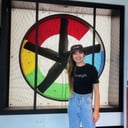So you've spent hours memorizing frameworks, reading up on the industry, and answering practice questions in a clear, concise manner. Perhaps you've also done a few mock interviews as well. You're almost there. The thing with interviews is that they're limited in time. While a more realistic product design process would allow you to produce a more robust recommendation, this is an exercise in speed brainstorming.
Furthermore, you've only got one chance to give your interviewer a sense of your thought process. So make sure you avoid these four common mistakes that candidates make when they get to the the real deal.
1. Avoiding the answer by asking for more data
Even though real decision making will be grounded in research and analytics, a product sense interview is designed to gather your perspective in idea generation. There won’t be time to ask a user researcher to run a study, nor will there be time to run a multivariate test (also known as A/B testing), or to pull some other numbers from a database.
But I’ve been surprised every time in a product sense interview when a candidate will just answer the question of "How would you design X?" by simply saying “I’d do some research and gather some data”.
Instead, it would have been better if the candidate stated his/her assumptions for the purposes of the interview, and go from there. For example, you can say that typically you would would want to understand current user needs and behavior by gathering additional qualitative and quantitative data, but for the purposes of this interview, you’ll assume X, Y, and Z. At the same time, it’s important to not swing too far in the other direction and assume that the only customers are people like yourself.
2. Designing for yourself
Accidentally only designing for yourself is a problem that shows up a lot subconsciously, and will limit your total addressable market (TAM). Not all interviewers or teams catch this, particularly if the interviewer and the candidate are from a similar demographic, and the end result is that the product team will have limited their own success.
For example, new grads from top universities targeting FAANG/MAMAA companies sometimes forget to consider young families, the less tech-savvy, or older generations. They sometimes forget to consider people in retail, restaurant, or construction jobs who are on-the-go and might be more reliant on mobile over desktop experiences. Candidates sometimes also assume that their audience is on the latest devices, with constant high speed connectivity.
In addition to limiting your problem space and therefore your product’s opportunities, designing for yourself leaves you vulnerable to subjectivity. It’s too easy to make decisions based on whether *you* like something emotionally, rather than based data that you would otherwise gather if you didn’t presume you knew what your customers wanted. While movies will often show A-HA moments where a brilliant thinker will offer a shortcut to what’s truly needed, there’s a reason why those moments and stories get turned into movies: they’re few and far between.
Both when interviewing and in day to day operations, you’ll need to account for the more common scenario of needing to base your decisions off of well-grounded data.
While you might prioritize building for a certain demographic, don't leave money on the table, especially for products that rely on network effects to be successful. Unless there's a good reason to significantly narrow down your audience, think more broadly to consider if an initiative is worth it.
3. Spending too much time on a persona
While the set up and the framing is important, be careful not to spend too much time describing a persona such that you run out of time to explain possible solutions! Some candidates spend a lot of time describing each of their personas -- including the specific age, relationship status, the types of pets they own, along with specific interests. Multiply that by a few personas, and you've suddenly lost several minutes of valuable interview time.
It's useful to be able to empathize with the persona, but make sure you leave time for your possible solutions and prioritization. It's most important to highlight the key challenge that the persona faces, and other demographic info is just providing more support. An outline of a persona, like "a parent with school age kids, living in the US" is sufficient.
4. Forgetting the competition
Something I've asked that has stumped candidates is why the customer might choose your solution over what else is on the market. Make sure to consider your potential customer's alternatives, and why it's not sufficient. In other words, remember the competition. For example, if you were considering building NextDoor, it'd be important to discuss why anyone would consider it when Facebook and MeetUp already existed?
More senior candidates will also indirect competition, as well as address features that would address retention -- first to market is not enough when your competition will also be innovating. Why will someone stay with your service? Granted, this may not be the first thing built for your MVP (minimum viable product), but you still should consider how to keep your audience around after you've spent significant effort in acquiring them.
How to remember while under pressure?
Sure, it's easy to read about tips now, when you're not under the time pressure of the actual interview. How can you remind yourself of all these key points while you are in the thick of it?
One technique I use is to jot down the framework or outline of what I plan to cover, whether on an available whiteboard, if it's an in-person interview in a conference room, or on a piece of paper or collaboration tool, if virtual. For example, if you write down "competition" or "alternatives" as part of your list of points to cover as you talk through your design approach, you're much more likely to remember to cover that point when you get there.
Summary (and usable interview outline!)
When you go into your Product Sense interviews, and you've got your target audience, their needs, and possible solutions defined and prioritized, make sure you set yourself up for success by remembering to:
1. State your assumptions.
2. Consider customers other than yourself...
3. But do it at an outline level!
4. Consider your customer's existing alternatives.
Best wishes with your interview preparation! Practice is key to overcome nervousness. If you need more individual support or a mock interview with detailed feedback, I'm happy to help.







